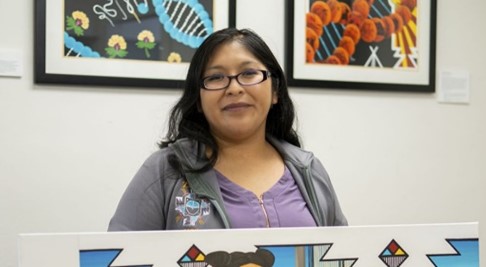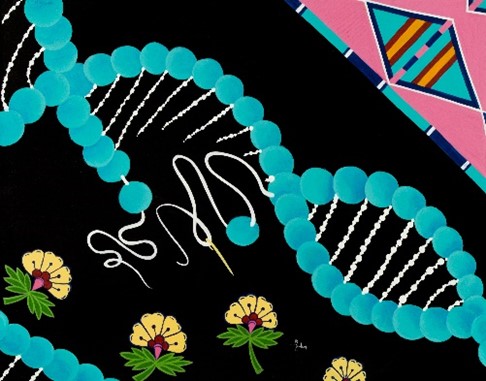Superfund Research Program
March 2023

Artist Mallery Quetawki combines her visual art skills, biology and healthcare background, and Indigenous knowledge to improve environmental health literacy among American Indian Tribes. A member of the Pueblo of Zuni Tribe in New Mexico, Quetawki has collaborated on environmental health outreach projects using art with the University of New Mexico (UNM) SRP Center. She currently serves as the artist-in-residence for the UNM College of Pharmacy’s Community Environmental Health Program (CEHP).
Following the rich Zuni tradition of art- and handicraft-making, Quetawki has painted all her life. As a Pueblo of Zuni member, Quetawki is also aware of >a href="https://www.ncbi.nlm.nih.gov/pmc/articles/PMC3929233/">health disparities among her people, such as higher rates of type 2 diabetes and end-stage renal disease, compared to the general U.S. population.

While working in healthcare, she realized there is a great need for communicating health messages to Indigenous people in ways that fit their knowledge and visual ways of thinking. She began creating paintings and digital art to communicate everything from how uranium damages DNA and zinc repairs it, to how mRNA vaccines operate in the body, using symbolism from an array of Indigenous cultures.
Quetawki is currently creating materials for the UNM Comprehensive Cancer Center, helping the center communicate cancer research and treatment information, and navigate cultural taboos, for the 19 Pueblo Tribes, among other projects.
“Not everything in science and health can be translated into these Indigenous languages,” Quetawki explained. “That’s where art comes in: It creates a common language that bridges those gaps.”
Quetawki recently won a grant to expand the UNM science-art program. She will begin training new artists and storytellers to translate and communicate health information for Indigenous peoples across the U.S.
“I want to continuing helping others by using my cultural knowledge.”
Read more in her NIEHS Grantee Highlight.


